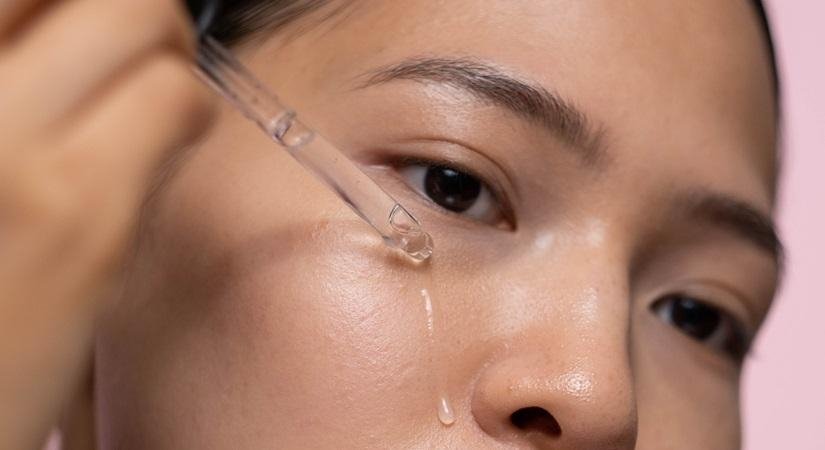
Salicylic Acid Or Glycolic Acid?
By Dr Aseem Sharma
The topical use of both Glycolic Acid and Salicylic Acid helps resolve various dermatological concerns due to their medicinal effectiveness.
Glycolic Acid
It belongs to the superfamily of Alpha Hydroxy Acids (AHA), widely loved for its mild exfoliating properties. These water-soluble acids are procured from natural sources like sugarcane, sugar beet, milk, etc. The topical application of alpha-hydroxy acids has a remarkable influence in improving skin texture and natural glow. Numerous scientific research studies have demonstrated that AHA-based chemical peels are highly potent for aging skin and facial discoloration.
Prevents Hyperpigmentation: Consistent use of Alpha Hydroxy Acids will effectively help get rid of hyperpigmentation, sun spots, and uneven skin tone. A global research study published in 2018 has concluded that topical use of AHAs has also shown clearance of dark spots left behind from sun damage. Alpha Hydroxy Acids also inhibit the activity of the tyrosinase enzyme which plays an essential role in the synthesis of melanin pigment.
Hydrates Skin: AHAs not only slough off dead skin cells but also help keep the skin hydrated. Humectant properties of AHAs help to lock in moisture thereby improving the appearance of dry skin and making it soft, supple, and responsive to other therapies.
Minimizes Appearance Of Wrinkles: Topical AHAs have been shown to improve the appearance of fine lines and wrinkles. AHAs help in cell renewal and promote collagen production which helps to diminish fine lines and improve the skin texture, overall.
Boosts Radiance of Skin: It is one of the best hydroxy acids for your skin, in terms of tonal correction. AHAs are great chemical exfoliators, which help attain bright, smooth, and glowing skin. They penetrate skin layers and loosen up the bond between dead skin cells to clear all the impurities. Hence, its use helps to perk up overall skin complexion.
Salicylic Acid
It is a beta-hydroxy acid (BHA), mostly obtained from willow tree bark, hazel, and wintergreen leaves. This oil-soluble ingredient penetrates the deeper layers of skin and helps to clean the clogged pores. Hence, it prevents the clogging of pores, which in turn makes it an ideal ingredient for acne-prone skin. In addition, salicylic acid possesses anti-inflammatory and antimicrobial properties, which reduce the risk of acne flare-ups.
Prevents Future Breakouts: Being a comedolytic agent Beta Hydroxy Acids (BHAs) inhibits the formation of blackheads and whiteheads, which may further turn into pimples. Using serums that have 1 per cent BHA & a Peptide complex helps in combating acne and decreases skin irritation and regulates sebum production.
Deeply Cleanses Pores: People with oily skin care are more prone to breakouts because of excess sebum production. When your skin produces excess sebum, your pores become congested with oils, dirt, and dead cells which ultimately manifest into pus-filled pimples. Salicylic acid is an oil-soluble ingredient and can get deep into your pores to remove excess oiliness and other impurities.
Soothes Inflammation and Redness: BHAs possess natural anti-inflammatory properties which help to provide relief from inflammation and irritation associated with acne.
Kills Acne-Causing Bacteria: Cutibacterum acnes (erstwhile Propionibacterium acnes or P. acnes) is a bacteria that is considered the most common cause of acne infection. Beta hydroxy acids possess antimicrobial properties that help keep these acne-causing bacteria away.
Can both acids be used together?
You can reap the benefits of Glycolic Acid and Salicylic Acid by opting for skin care products comprising both ingredients that are effective and show results. Over-the-counter products containing both AHAs and BHAs offer good results in treating active acne and preventing the risk of future outbreaks.
A face wash containing glycolic acid and salicylic acid is considered good for oily and acne-prone skin types. If you are dealing with hyperpigmentation and dark spots, a fruit-based AHA face wash is great to use. Glycolic Acid can increase your skin’s sensitivity toward the sun which in turn can cause sunburn. It is important to always wear a broad-spectrum sunscreen with an SPF of 50 & PA+++ or above when you include AHAs in your skincare routine.
Note: While incorporating AHAs and BHAs in your skincare routine, the special mention here is to start with lower concentrations and build your way up, layering it with moisturizers along the way.




